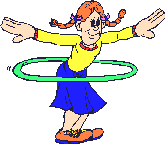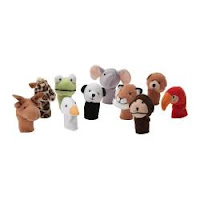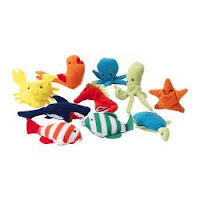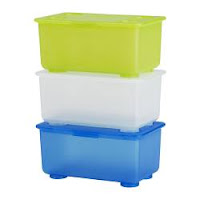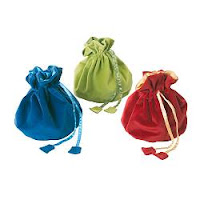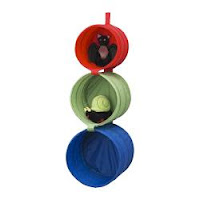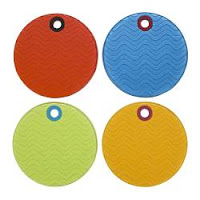Reporting back from PLS #5 – Fly the world with Primary Languages Airways.

As I approached Conference room 1 on Friday, I couldn’t work out why there was a queue. Was I in the right place or had I taken a wrong turning and ended up by the toilets?
All was soon revealed as ‘boarding packs’ were passed back and we were instructed to fill in our passports before picking three items for our suitcase and collecting our boarding passes. By the time I arrived at the front of the queue with my holiday wardrobe, consisting of a pink bikini, red shorts and green flip flops (there wasn’t much left, and our destination was La Réunion), there was one seat left for me. And, authentically, it was right at the back and involved me climbing over everyone else :o)
We were welcomed aboard our flight by Daryl Bailey, Primary Language Coordinator at Hove Park School and Language College and Hilary Philips from St Andrews Primary. I was already aware of a previous creative collaboration of these ladies – Parachutes and PE: Active language learning in Primary School (downloadable from the Hove park site – link is to German version. Also in My Box of Goodies) so this was going to be exciting!
We were asked to fasten our seatbelts, extinguish cigarettes, and advised of emergency procedure and that our lifejackets were under our chairs, all in French. Then we took off – complete with sound effects and images on powerpoint of the view from the cockpit.
Once airborne, Hilary explained the activity. A week before International Week began at her school, Hilary was inspired to create an unforgettable experience for every child at the school.
St Andrews is a two form entry primary school with 450 pupils with a range of home languages. The idea was that the activity would focus and give context to language work and involve everyone – Hilary came up with the idea of a flight. She considered a flight to a French town before settling on different countries to match the focus country chosen by each class.
having got the staff onside, parents were contacted by letter explaining that despite what the kids may have said, the flight was a fantasy one, not in reality, and asking for any help that could be offered-
did anyone work at Heathrow or have contacts?
anyone have any equipment that might be used?
could anyone come in and give a hand?
In this way, the school discovered that several parents had old cabin crew uniforms in the loft that were worn by staff on the day; an airline captain that someone knew became involved on one of the two days and several authentic posters and articles from airports were lent to the school.
Each flight was for two classes across Key Stages to enable the older pupils to look after the younger ones. According to Hilary, this led to some lovely moments as pupils read to one another, looked after those who looked apprehensive, and helped carry luggage.
The airport was in the school hall so had to be easily moveable to allow for it to be packed away at lunch time and for activities after school. There were checkin desks, a luggage desk with luggage for each flight being placed in a trolley (lent by Iceland!) and wheeled round to baggage reclaim in the corridor after the flight. The caretaker made a metal detector archway from carpet tube and sliver paint, and all kinds of old technology such as old fashioned phones, obsolete keyboards and walkie talkies were discovered and used.
Pupils each had to pack a small piece of baggage with suitable clothes for their destination (researched as part of the activity earlier in the week) and prepare their pass port that they had to present at Passport control where the staff found all sorts of excuses for querying passengers being allowed to board.
Staff had a corporate image – black tops with a chiffon scarf and a badge – and everyone gat involved including kitchen staff, governors and even the local vicar!
Once through passport control, pupils waited in the ‘departure lounge’ where they had a choice of reading materials – magazines prepared earlier in the week about the destinations of the flights. The first pupils through were allocated to the ‘First Class’ loinge, giving a front seat and the best choice of the magazines.
Once boarded on the ‘plane – marked out by tickertape – passengers had a magazine, menu and advertisement sheet to study in a polypocket on the back of the seat in front. At takeoff, a big screen formed the front of the ‘plane on which were projected pictures as if from the cockpit on takeoff with accompanying sound effects of engine noise.
Once airborne, there was even a refreshment trolley before the flight dropped off the first group of tourists, perhaps in Sark (Reception) before flying on to La Réunion (Year6) – bizarre but fun!
The experience was unforgettable for the pupils – Daryl tracked down some pupils who had been at St Andrews last year for the flights, and had now moved on to Hove PArk, and they still recalled the excitement and delight of the whole thing.
Hilary and Daryl pointed to the plurilingual nature of our world and how this activity drew together all the other activities of the week. It promoted teamwork, involved everyone, gave huge opportunities for speaking and listening, offers a context for language learning, brings the wider world closer to home and offers opportunities for FUN! Hilary also pointed out that this linked in with the QCA Geography unit on La Réunion, and was thus also cross curricular.
The Air St André experience sparked and inspired a Chinese Day, links with Travel and Tourism and Enterprise at Hove Park, and perhaps most importantly of all, the pupils are still buzzing about it six plus months on.
A really interesting idea – I wonder how the staff at my school would respond if I went to a staff meeting and made such a suggestion? Might try it out….
